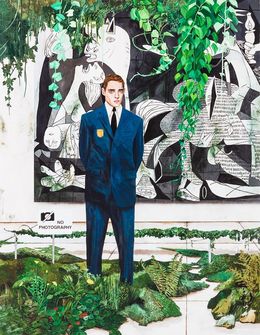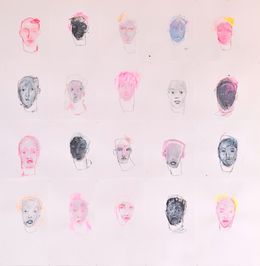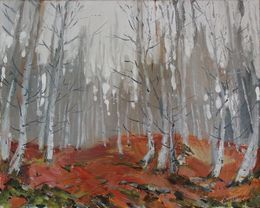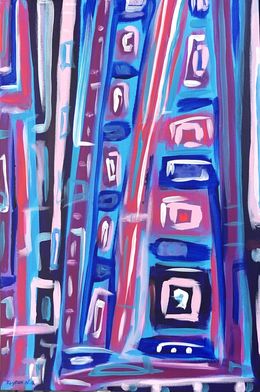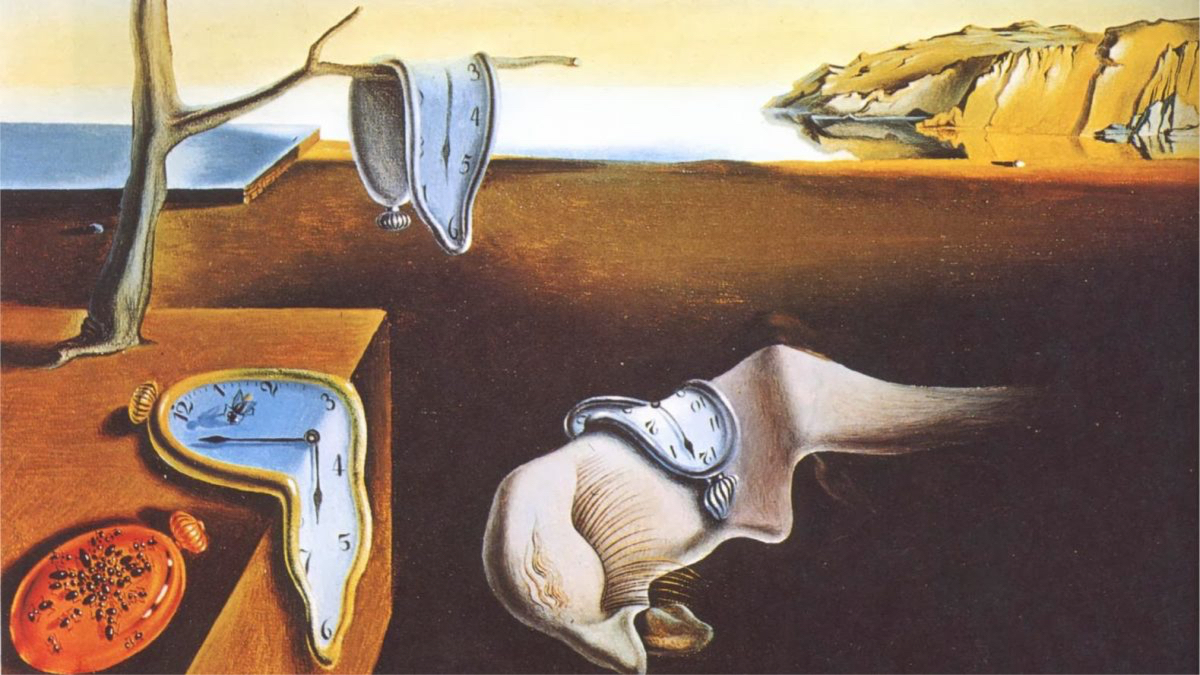
8 Things to know about Joan Miró

Joan Miró was a painter, poet, sculptor, ceramist and so much more. Born in Barcelona in 1893 from a family of craftsmen, Joan Miró began painting at the age of 8. He joins the School of Fine Arts of Llotja, then the one in Barcelona where he discovers the beautiful creations of past artists and finds inspiration. Despite being very attached to his native land, Catalonia, it was his departure to Paris in 1920 that marks the beginning of his artistic career. From then on, his production did not stop! He produced more than 2,000 paintings, 5,000 drawings, and collages, as well as 500 sculptures and ceramics. These statistics are startling, illustrating the nature of the painter: free and inspired.
Joan Miró was on the go during every moment in his life. He went from medium to medium, movement to movement, and country to country. He never confined himself to one thing, as he explains: “What is important is not to finish a work, but to get a glimpse that one day, it will allow you to start something“. The evolution of his works is a testament to this, moving from figurative minimalism to abstract expressionism. They’re full of constellations, women, comets, birds, and are imbued with such lyricism that one no can no longer tell where to look. Welcome to the fascinating and mysterious universe of a painter who, throughout his life, hoped to contain dreams in his works!
Catalonia and the Hispanic world, a perpetual source of inspiration
Joan Miró’s native region strongly influenced his artistic production. As a teenager, he fell gravely ill with typhus. Completely bedridden, he returned to his family home in Catalonia. This struggle made him aware of his attachment to the Spanish land, from which his works are constantly inspired.
At the School of Fine Arts in Barcelona, he painted with fervent lyricism and accentuated colors. From his canvases, we get a sense of fauvism, while a lively energy emanates. Miró also met Pablo Picasso, with whom he became friends. From then on, his brushstrokes more closely resemble Cubism, as the painter plays with perspective and multiple points of view. His inspiration, however, is more akin to Cézanne. One day, he exclaimed, “I will break their guitar“, referring to the painting of his friend Picasso.
Horrified, he fled Spain during the civil war. This rupture resulted in many violent collages, paintings, and drawings, with large red and black bright lines on the paper.

Spain is also the source of his famous painting The Farm (1920-1922). With this painting, Miró paints a synthesis of the Cubist experiment and realistic meticulousness. The whole is immersed in the Catalan universe, which he loves so much. After this painting, the artist moves toward abstract figuration, and we can already see its beginnings.

The painting was a gift from Mary Hemingway to her husband, the famous writer. An admirer of Miró talent, he sums up the work in a single sentence: “He had in this painting everything you can feel about Spain when you are there, and everything you can feel about Spain when you are not there“.
Not just surrealism while in Paris!
In the years 1919-1920, the Catalan painter set down his suitcases in Paris, the French capital full of artists: Cubists, Fauvists, Surrealists, Nabis, Dadaists, Futurists! It is amidst this combination of new movements and artistic ideas that Joan Miró arrives. In this Parisian period, he meets Tristan Tzara, Jean Dubuffet, André Masson as well as all the Parisian avant-gardes. He participates with them in artistic experiments and searches for his own language.
He also discovered the experiments of automatic writing with André Breton and Robert Desnos, which fascinated him. This process allowed him to discover a new way of understanding the unconscious and liberating it. The dreams, the strange, the offbeat humor and the imaginary attracted Miró and forged his art.
In 1924, he signed the surrealist manifesto alongside Max Ernst, André Breton, Paul Eluard, André Masson, René Magritte, Giorgio di Chirico, and Guillaume Apollinaire. Surrealism, a movement where he found the most freedom, won the painter’s heart. This movement deeply marked his artistic production along his career.

Surrealism according to Miró: A means to contain dreams
Within the surrealist movement, Joan Miró spent time with many poets. The poetic lyricism is almost omnipresent in his works. Exchanges with Paul Eluard, Jacques Prévert, Jacques Dupin, Max Jacob, Aragon, André Breton continuously nourish his universe with poetry.

With a limited palette of blue, white, yellow, black, and red appears birds, women, stars, comets, flowers, snails dancing together on the canvas. Surrealism allows Miró to give free rein to his imagination, revealing his dreams, his unconscious. The artist tries, with both rigor and fervor, to capture on paper what is essentially immaterial.
Starting in 1928, Miró began a series of “poem-paintings” that combine dreams and lyrical elements. From then on, a whole bunch of works were born, depicting the Spanish artist’s subconscious through an omnipresent and flamboyant blue. Strange forms evolve, dancing on a mysterious and bewitching flatness. Two-dimensionality unsettles us, letting our thoughts fall into an infinite blue, while recalling the sea and the sky.

After moving on to another artistic method, Miró returned to his dream paintings in 1961. For more than ten months, he worked, meditated and studied to execute his famous series of Blue I, II, III. It is the successful synthesis of his surrealist series about the subconscious. For Miró, this triptych is the summit, as he tries to perfect his world, his reality, his dreams.

Joan Miró’s Metamorphosis
The Spanish artist was a true observer of nature. From the 1930s onward, he abandoned realism to represent exclusively “the ghost of form”. Tending towards innovation and revolution, the movement allowed Miró to free himself from traditional forms of representation.
As 19th-century artists continued to struggle, Miró wanted to go beyond the simple physical representation of nature. The Surrealist attraction to metaphysical science led Miró to search for a new artistic language. The notion of “beyond” fascinated the painter. His works are true metamorphoses. Meta– which means beyond, and morphed-, the form. Through an almost radical shift at the end of his life, Miró went beyond the form, and beyond what he saw. Therefore, he painted what there is “beyond” the essence. It’s the tension between the extremes of figuration and complete abstraction that makes his works so intense.
The flat geometric shapes and strange symbols on his works do not come out of nowhere. It is another type of figuration of reality. Moreover, the titles of Miró’s works are all explicit. Surrealists express in their various writings that reality is the basis of all art; they no longer rely on the physical reality of things to go beyond.

His passion for ceramics and the meeting with Artigas
In 1917 in Barcelona, the Spanish artist met a ceramist, Joan Llorens i Artigas, with whom he became friends. In the 1940s, Artigas took the Catalan artist under his wing and taught him how to work, model, and shape the clay to obtain the object of his thought. It was a real pleasure for the painter whose imagination had no limits. At the beginning of his practice, Miró only painted clay vases.
As the artist slowly appropriated the technique, the clay became his new flat canvas where he incorporated his colors by adding tesserae. In 1957, Miró was selected to decorate the UNESCO headquarters in Paris. He designed two parallel walls on the outside of the building: The wall of the Sun and its counterpart The wall of the Moon. With rigor, Miró supervised the construction of the walls on the construction site. The complexity of the technique acquired by Miró assured that ceramic drawings were fluid and had an impressive effect on movement.
Miró is no longer painting with the azure blue of the sea and dreams but goes by the fire and earth. A change surely influenced by the Spanish Civil War.

One of his greatest ceramic works date from the last year of his life. In 1983, he made Woman and Bird in Barcelona, in a park that carries his name. For one last time Miró collaborates with Artigas for this colossal work (22 meters). Commissioned by the city of Barcelona, it’s dedicated to welcoming visitors arriving on Catalan soil.

Sculpture, a way of materializing his universe
In the 60s, Miró searched for other mediums to explore his art. He abandoned ceramics for a while and concentrated on sculpture. Not the traditional sculpture from a block of stone, but assemblages of various objects. In his studio, Miró chose objects that are often common and useless but have the capacity to satisfy his fantasy.

The blends, choices, and transformations are not the fruit of creations. These sculptures are acts of thoughtful artistic production. The forms arise unexpectedly but never without reflection, changing the identity of the objects to offer small metamorphoses.
With 3D and the incorporation of these objects in a specific environment, Miró materializes the abstract figures of his paintings. All these shapes from his mind become “animated”. The whole thing is done with humor, making a joke of the traditional art of sculpture.
Miró: Destroyer and Arsonist
In the last years of his life, Miró hoped to reinvent himself once again. While in his studio, before a freshly painted canvas, he wonders: “what if we burned it?” Without awaiting an answer, he got gasoline, sprinkled his painting, and struck a match. The work burnt completely and Miró was delighted.
However, his experiments didn’t stop there. Miró burnt, cut, sliced, tore, and lacerated his canvases.
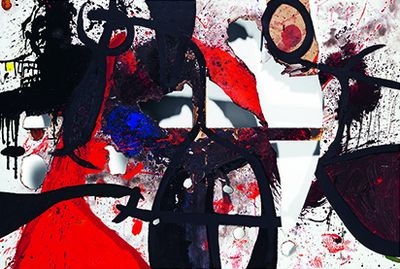
For the artist, destruction is not synonymous with devastation, but is a return to his roots. The canvases are exposed on the ground unbound from their frame, where the torn canvas reveals what makes a canvas a canvas. With fire, there is also the idea of burning what has been done before. Through this act, the painter makes a clean sweep of past canvases. It expresses a will to destroy what made him famous in order to return to the source of his first works.
Through his career and his life, Miró is propelled by the same inner fire. A few years after making these paintings, the artist died. The beauty of this series also lies in its symbolism, accentuated by the artist’s death being so close behind.
The Joan Miró Foundation
On June 10th, 1975, The Joan Miró Foundation opened its doors to the public. The project was put in place by the artist himself, with the aim of creating a complete art center: a research center, school, with collections and exhibitions… The building was designed by Josep Lluis Sert, a friend of the artist. He highlights Miró universe, with an open dialogue between the building and the artist’s works.
The foundation allowed the Catalan artist’s knowledge and skills to live on, through an important collection of his works. Today it promotes many contemporary Spanish artists, supporting them in their works of artistic innovation. Through them, the foundation immortalizes the legacy of Joan Miró.

Joan Miró is an artist who never stopped reinventing himself; he was always in search of something new. Movement defines both his person and his works. The Catalan artist, known for his free spirit, offers a whole range of emotions and ideas. His works are imbued with mystery, gentleness, fear and darkness. All this without losing the poetry, so intimately linked to each of his creations.

About Artsper
Founded in 2013, Artsper is an online marketplace for contemporary art. Partnering with 1,800 professional art galleries around the world, it makes discovering and acquiring art accessible to all.
Learn more



